Best Yoga Poses For Runners
Lengthen muscles, pace your breathing, and enhance balance with the best yoga poses for runners.
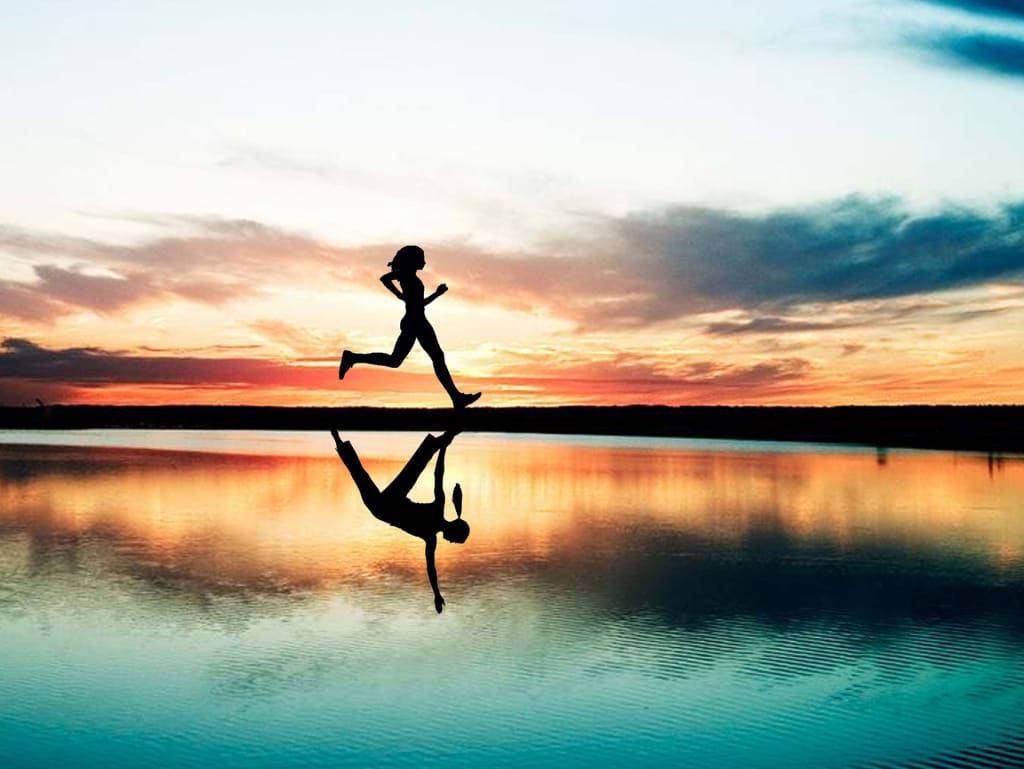
Yoga poses for runners go beyond incorporating a healthy stretch regimen prior to an intense run. Traditionally, yoga is formatted to focus on regulated breathing patterns. As a result, it affects the human body in multiple ways including increasing blood flow to vital organs and tissues, elongating muscles, toning the body through prolonged muscle contractions, and improving sitting/standing balance for a variety of activities. So it only makes sense that yoga pairs nicely with running. For instance, when an individual is training for a half marathon, they will rapidly learn of the demands and tolls placed on the body: pulled hamstrings, IT-band syndrome, lower back pain, sciatica, asthma/anxiety attacks, heart palpitations, shin splints, headaches, neck pain, rolled ankles… and the list goes on. This is not meant to scare readers away from starting a running schedule. Rather, it is meant to recommend an easy way to take all of the potential pain and damage from training and resolve it through basic yoga techniques. The following yoga poses for runners are easy to use and can be used daily in preparation for races of any pace and length.
Tree Pose

Firmly plant one foot on the flat surface of the ground with the toes facing forward. The other foot is placed either mid-inner calf or mid-inner thigh (depending on skill level) to make the opposite leg form a triangle. The hands are either placed by the chest in Namaste (greetings) position or brought together and posed directly over the head with arms straight. Ideally, this position should be held between 30 seconds to three minutes per leg. The obvious benefit is to improve standing balance. The more unnoticed benefits are toned ankle strength, paced breathing, and increased focus, all of which are incorporated into running in order to prevent injury to the lower limbs and to pace long-distance running. Additionally, if the planted leg is slightly bent at the knee, then the quadriceps (thigh muscles) are exposed to excellent toning for uphill running.
3-Step Scorpion Pose

This is one of the more intermediate yoga poses for runners. The participant starts on the ground on all fours. Extend the unilateral (same side) arm and leg fully while balancing on the other arm and leg. Then, reach the lifted arm back and grab the lifted foot, pulling the leg into a curl. Finally, pull the torso out to the side opposite of the planted leg with one ear facing the floor and the other towards the sky.
All poses are held up to one minute each before switching sides. The first pose tones the glutes and hamstrings for uphill running, the second pose elongates the quadriceps to minimize cramping for downhill running, and the third pose allows for stretching of the hips and glutes to reduce sciatic pain.
3-Step Warrior Pose
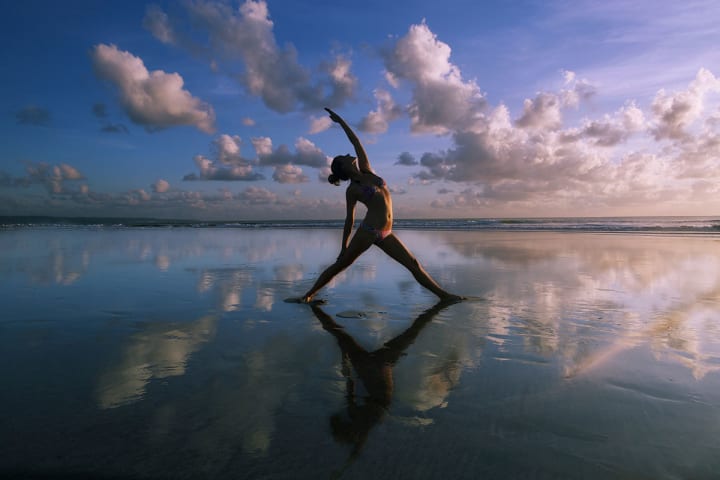
Pose one requires the participant to be standing and while facing forward planting one foot ahead of the other by a good 3-4' and raising the arms straight above the head. Lean over the front foot to increase hamstring stretching while toning the quadriceps and lower limb muscles (ideal for downhill impact). Pose two transitions from pose one by maintaining the same foot pattern while outstretching both arms, one forward and one backward. This provides a slight twist on the lower back while maintaining the lower limb contractions, and the participant will start to feel the tension in the back leg as well. Pose three still requires the same stance position, but the torso bends forward and to the side as you lean onto the front thigh with your elbow and outstretch the other arm above and forward from the head. Pose three opens up the serratus muscles and increases lung capacity.
Downward Dog

Downward dog is comparable to runners simply bending forward at the hips to touch their toes with their fingers. Just imagine starting in that position, then walking your hands out about 4-5' while maintaining a flat-footed position. The hips remain higher than the feet and head, and the position allows for distributing body weight back and forth between the arms and legs. This pose is a great stretch for the glutes, hamstrings, and calf muscles, which might reduce overall cramping by the end of a race. Furthermore, the upside down position of the upper body allows for increased blood flow and oxygen to the brain and lung tissues, both of which are essential to keep hydrated during a race and training.
Mini-to-Big Cobra (Also Commonly Known as Upward Facing Dog)
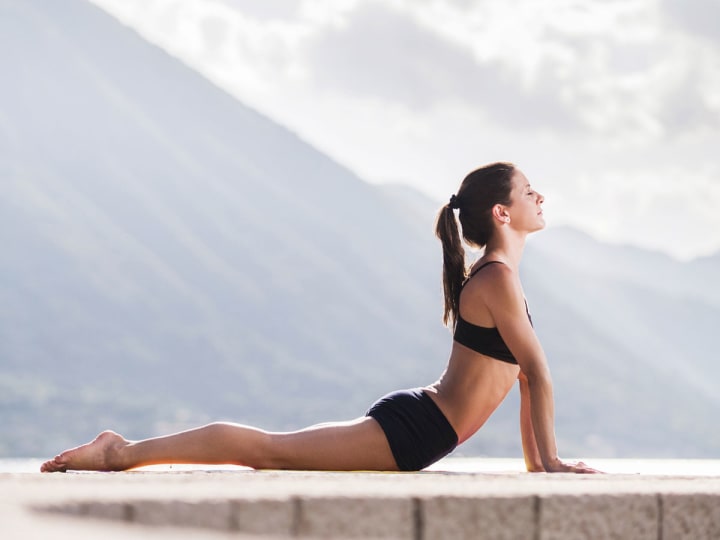
Begin laying down on the stomach on the floor and propping up on both elbows while extending the neck. This first position, mini cobra, is a good warm-up for big cobra, especially for trainers with limited range in their spine. Big cobra is achieved when moving from the elbows to propping up on both hands, increasing the extension angle on the lower back. This yoga pose for runners provides a good stretch to the lower back. Furthermore, big cobra retracts the shoulder blades, allowing for expanded space for lung capacity. Big cobra is a convenient pose for runners to hold for a while and practice deep breathing. Overall, this increases flexibility in the lungs and the diaphragm which aids in running endurance.
Seated Spinal Twist

Any yoga pose that twists or obscurely bends to spine should be practiced with caution, but at least the seated spinal twist is easy and gentle on the lower back. The participant is seated in lotus position, with one hand placed on the opposite bent knee, pulling the torso to that side to perform a lower spine twist. Each side should be held at minimum between 30 seconds to one minute while maintaining a symmetrical, upright upper body position. This is one of the many yoga poses for runners that stretches lower back extensors, lat muscles, and serratus muscles that often contribute to back pain during intense training. Note, runners who have spinal fusions or have had recent back surgeries should check with their doctor before proceeding with this stretch.
Triangle

The feet are firmly planted into the floor about 3' apart. Lift both arms, flexing at the shoulders like they are getting ready for a huge bear hug. With the arms still straight, maintain a forward facing position and reach for one foot. Once you reach the food, turn your head up and gaze at the other extended arm in the air. This is an excellent position for stretching the hips, spine, glutes, and hamstrings. Among yoga poses for runners, the triangle may be one of the more tricky poses especially for runners who have trained a long time with insufficient stretching. In conclusion, trainers should proceed with caution and only reach far enough for a decent stretch without causing unnecessary muscle pain.
Partial Bridge
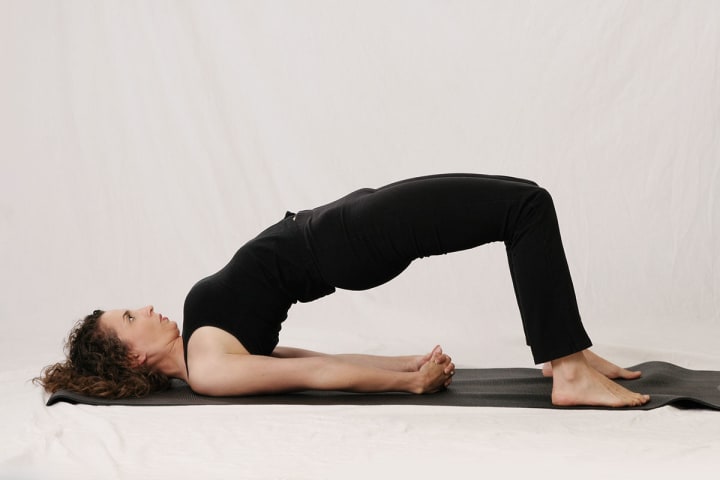
This is not the bridge position that you see in gymnastics. It is a slightly less intense version of it. Start in a supine (lying on the back) position, flex the knees to plant both feet on the ground, and then, while keeping both hands/arms flat, press the upper extremities and upper back into the ground and push the hips towards the ceiling. The position should be held with knees flexed at 90 degrees and the hips elevated to roughly the same height as the knees. When held in position for more than 30 seconds, the partial bridge position allows for toning of the glutes, hamstrings, quadriceps, and calf muscles. At the same time, back extensors are contracted, which is useful in maintaining an upright position for running and minimizing overall back and spine pain with pavement impact.
Seated Forward Fold

The majority of runners use this exercise without really knowing it is considered a yoga pose. It requires sitting with both legs extended in front of you and then reaching for your toes by extending the arms. When done correctly, the glutes, lower back, and hamstrings are stretched. When you extend your feet and pull on the toes with your hands, the gastrocs (calf muscles) are added to the stretch. For runners who already have lower back pain or limited flexibility in the hamstrings (especially men), an optimal stretch can still be reached with slightly bending the knees or only partially reaching towards to the toes. For prolonged running, this yoga pose for runners may reduce sciatic pressure and risk for hamstring tears.
Half-Moon Pose
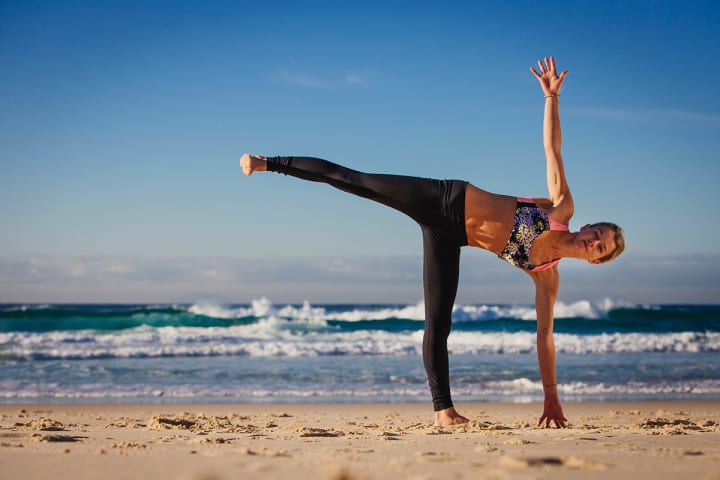
Once again, this would be another intermediate yoga pose for runners but incredibly beneficial. Female runners tend to have weaker thigh adductor muscles (inner thigh muscles) which contributes to numerous pelvic problems with age. As far as running is concerned, weak or atrophied adductor muscles reduce muscular support at the knee and lead to IT-band pain and knee injuries. The half-moon pose requires balancing on one leg while lifting the other while extending the arm (same side as the planted foot) all the way to the floor. With the torso and head facing forward while the lifted leg is held at 90 degrees to the planted foot, this position allows for toning the adductors and tensing the IT-band. After holding the position for 30 seconds to a minute, the participant switches side.
These are just some of the countless yoga poses for runners to optimize a healthy and safe workout. As any seasoned runner would know, stretching prior to a race is necessary. With these poses in mind, runners should incorporate a handful of yoga techniques into their stretch routine as well as utilize the same poses daily to reduce risk for injury.
About the Creator
Mackenzie Lu
Namaste. Active yogi and life enthusiast. It has become her mission to spread the benefits of having the mind, body, and soul in tune with one another.

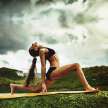
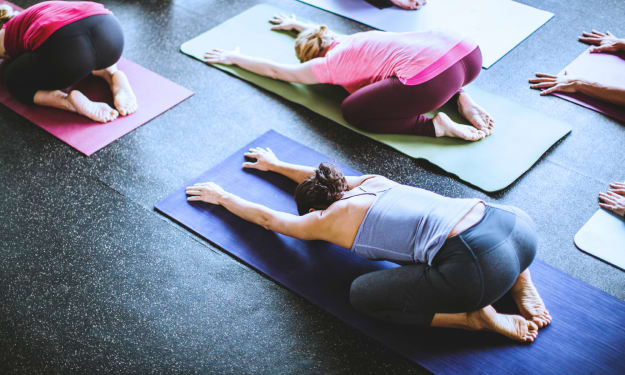



Comments
There are no comments for this story
Be the first to respond and start the conversation.